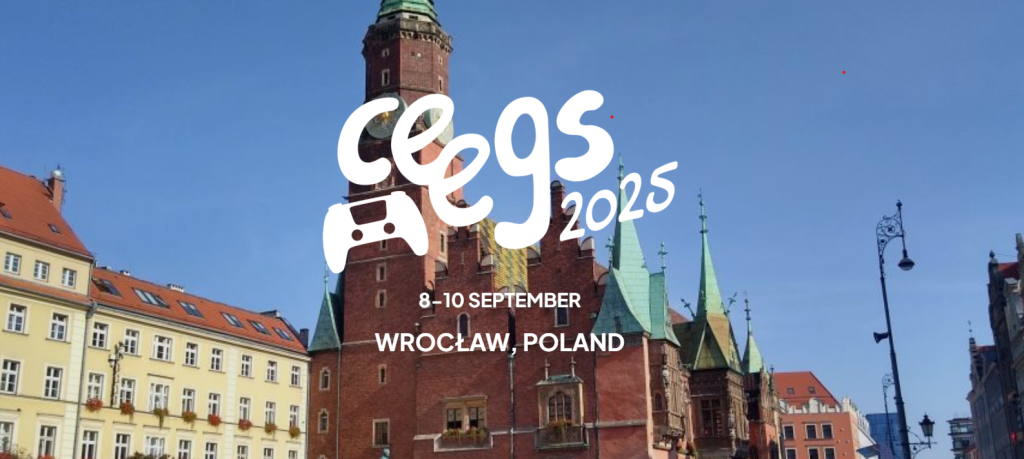
Theme: Landscapes, Cities, Localities
CEEGS 2025 took place in Wrocław, “the City of one Hundred Bridges,” also dubbed the meeting place. It has long been a place on or near the border, linking multiple countries, cultures, communities, and languages. Historically influenced by Slavic, Roman, Jewish, and Germanic inhabitants, today the city continues to witness various kinds of international, intercultural, and interspecies meetings, which makes it a particularly matching scenery for the conference topic: Landscapes, Cities, Localities.
The conference program is managed by the Central and Eastern European chapter of the Digital Games Research Association. Workshops and local organization are managed by the local team at the University of Wrocław (UWr). The units organizing the conference at UWr are the Institute of English Studies and the Institute of Sociology.
Thinking in terms of space and environment is an experience shared by game designers, players, and scholars. Explorable, strategic, symbolic, imaginary, open or claustrophobic, game spaces can be essential genre markers, narrative devices, mechanical tools, political platforms, critical resources and more. The three spatial categories that co-create the topic of this year’s CEEGS conference – landscapes, cities, and localities – bring out the qualities that seem particularly in tune with the multifaceted and complex ways in which space may be relevant for games, game cultures, and game industries. On the one hand, they are, by definition, constructed, delineated and, more often than not, anthropocentric – locality defined from a situated point of view and usually signifying the mutual infiltration of the spatial and the social (Duncan, 1989); city as a trademark example of human-shaped habitat; and landscape implying the presence of not only an observer and their aesthetic lens, but sometimes also traveling technology (Urry, 2007). All those features resonate with controlled and pragmatic design as games’ fundamental attribute. On the other hand, each of those categories offers a different kind of flexibility, openness and porosity – local and global contexts in an ongoing negotiation within game cultures and industry; in-game urban settings frequently functioning as patchwork, heterotopian, or hybrid environments; landscapes reconciling the inevitable omnipresence of the player’s eye with various ways and not always anthropocentric goals of visualizing the gameworld space.
The three categories are also in line with the fact that many game scholars around the world are now interested in local aspects of games. The local, conceived broadly as a counterweight to the global (Swalwell, 2021), can manifest itself on different scales. In-game, this could mean a very specific area (S.T.A.L.K.E.R), a large stretch of land that now belongs to a single nation-state (Kingdom Come: Deliverance), or a region containing multiple countries (Reign: Conflict of Nations). In terms of game cultures and game production, “the local” could refer to a few friends making small games in the same city of the Eastern Bloc in the 1980s, to the contemporary indie game industry in a particular country, or to the decades-long unauthorized game distribution across Central and Eastern Europe.
The conference embraces all these scales, and also acknowledges the importance of the global scale. This year’s edition, however, puts emphasis on relatively small places and spaces, which we term as localities. The other two categories, landscapes and cities, are not meant to limit the discussion scope or oppose each other, but rather to signal the variety of approaches to space in and around the game medium: from flat to three-dimensional, from decorative to interactive, from carefully arranged to chaotic, from uninhabited to populated, from places to non-places (Augé, 1995).
KEYNOTE SPEAKERS
Märten Rattasepp Layers Upon Layers – the Spaces for Disco (Elysium & Pentiment)
Dorota KołodziejczykThe Game Exotic – How to Decolonize Gaming and Not Lose the Fun? A Transmedia Reflection

